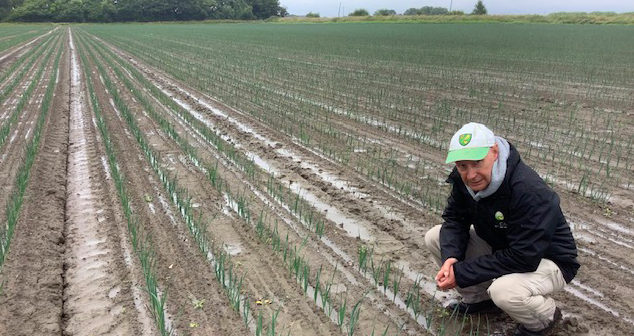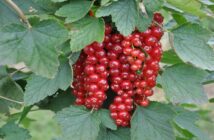Despite the loss of several key herbicides in recent years, leek growers can still achieve effective weed control by using a combination of the remaining active ingredients, with the addition of aclonifen to tank mixes ensuring the full spectrum of annual broad-leaved weeds are accounted for.
That is according to ProCam agronomist, John McCulloch, who explains that effective weed control in leeks comes down to three factors: applying safe doses of multiple active ingredients, leaving a suitable interval between repeat applications and ensuring plants have developed a surface layer of wax prior to being treated.
“With the loss of several herbicides in recent years, leek growers have become increasingly reliant on three main active ingredients; pyridate, bentazone and fluroxypyr,” John McCulloch explains. “While using these actives in combination will work against the majority of weeds, they won’t necessarily cover all targets. Thankfully, a fourth active ingredient, aclonifen, which can be used at post-emergence to provide a broader range of cover, is now available thanks to an Extension of Authorisation for Minor Use (EAMU).”
Emerger (600 g/L aclonifen) is predominantly known as a pre-emergence herbicide for the control of annual broad-leaved weeds in potatoes, but its EAMU means it can also be used as a treatment in a range of vegetable crops. Mr McCulloch is however keen to point out that, as with any product licensed under an EAMU, the use of Emerger on leeks is at the grower’s risk.
“The EAMU was issued in spring 2020 which meant Emerger was used last year with varying levels of success,” Mr McCulloch continues. “At first I was reluctant to use it on leeks as there were anecdotal reports of it affecting crop performance – particularly when used as a pre-emergence treatment – but this year it’s being used to much better effect, simply because growers and agronomists have learned from last year’s lessons.”
Applying too much of the active ingredient too early in the crop’s development can be to the detriment of the crop as well as weeds, Mr McCulloch explains, “but by following a few simple rules, there’s no reason why aclonifen can’t be used successfully and safely in leeks.”
Mr McCulloch’s first recommendation is to use aclonifen at a low initial rate: “Applying Emerger in combination with Lentagran WP (45% pyridate) and a nutrient growth promotor such as Hadron will provide effective control of a very broad spectrum of weeds including key targets such as fat-hen, bindweed, redshank and pale persicaria,” he explains.
“Ironically, the addition of a growth promotor will also help weeds to grow more vigorously, but this can be beneficial as it will help any herbicides already applied to be taken up more readily. However, aclonifen shouldn’t be applied too early as the crop needs to have developed a layer of leaf wax to prevent the herbicide from working against it as well as the weeds.
Most crops will usually be ‘waxed up’ by the time the first true leaf has emerged, but it’s worth checking to be certain. If it can’t be felt when rubbing the leaf between thumb and forefinger, delay application as you’ll run the risk of damaging the crop.”
Mr McCulloch’s third recommendation is to make multiple herbicide applications at suitable intervals: “It’s advisable to leave at least five to seven days between applications,” he explains. “Young crops which are at the one true leaf stage and protected by wax will be able to withstand low rate applications of aclonifen. As the crop matures the amount of active can be increased but it isn’t advisable to apply too much of the total 0.65 L/ha allowance in one go.”




